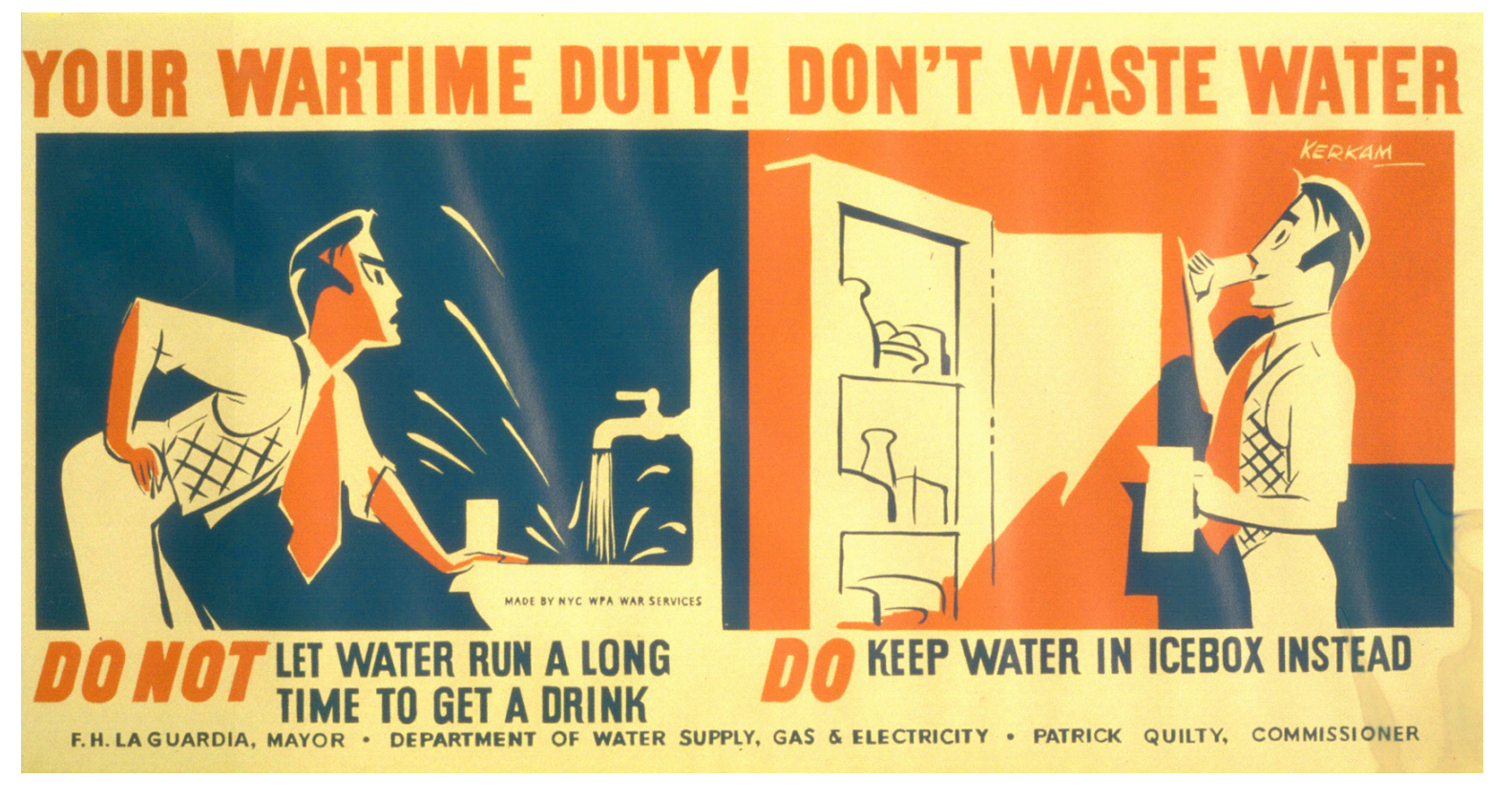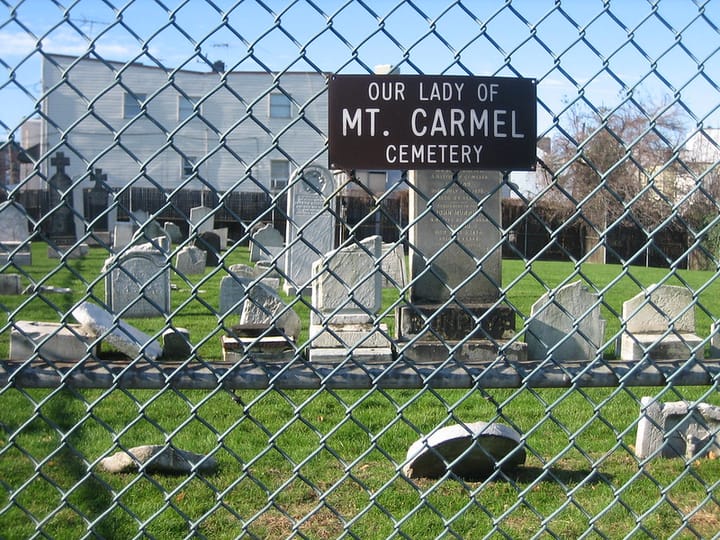Even in a drought, NYC is getting wetter all the time
Having too little water is an anomaly; experts worry about too much water instead

Last week’s election results combined with the 80 degree temperatures as Christmas decorations were going up gave everything in the city a “terrible Florida energy,” as our own Dave Colon said. This week we’re talking about another state’s bad vibes that have infiltrated New York this week: California.
By that, I mean the Golden State’s notorious lack of water that leads to drought conditions, water rationing and apocalyptic wildfires. Like most things that are too California-coded, we don’t love it, and wish it would simply stop happening. Is this a vision of the future to come: air quality alerts in the morning, red flag alerts at night and putting avocado on everything in between? It’s a more unnerving feeling than our other recent climate disasters because it hits at New York’s most valued and beloved resource: plentiful, delicious fresh water. The thought of not having unlimited access to this natural asset — the alleged elixir behind our pizzas, bagels and vampire-like ability to avoid aging — is horrifying.
The good news, according to some drought experts, is that no, this is not a preview of some Californication of the East Coast. The bad news: instead of too little water, we should be more worried about having too much water in the form of our increasingly wet local climate. That recurring problem of having too much water, and figuring out where to put it, is one we’re already working on at least.
“Overall, the New York area is one that's actually been getting wetter over the past decades, not drier,” said Richard Seager, a professor in the Department of Earth and Environmental Sciences at Columbia University who studies North American droughts. "So that's why this has been so unusual.”
Seager said he’s “not particularly worried about this,” adding for assurance: “ I live in New York City, right? I rely on the water supply.”
Still, the symptoms of the drought, however unusual, are not encouraging. Prospect Park was on fire last week, one of more than 229 brush fires in just the last two weeks, according to the FDNY. The damage appeared to be minimal but parts of the park will take “many seasons” to recover, as Morgan Monaco, president of the Prospect Park Alliance, told the Brooklyn Paper. Mayor Eric Adams banned grilling in parks to prevent any unintentional sparks — and also reminded New Yorkers that throwing your lit cigarette butts in the street is not “hip” and “cool.” Gov. Kathy Hochul issued a statewide burn ban, which means no open fires for burning leaves or cooking (backyard fire pits and grills are still OK). A brush fire cut through Inwood Hill Park this week. Wildfires have been burning in New Jersey all week, and some of the smoke made its way over the city. We couldn’t blame Canada or California this time, the fires were coming from inside the coast. Jersey issued a drought warning this week. Farmers upstate are struggling: “The ground is just dust.”
Brush fire burning in Inwood Hill Park. FDNY now on scene. Please use caution if you are in area.
— Mark D. Levine (@marklevinenyc.bsky.social) 2024-11-13T19:57:58.858Z
Seager called the recent drought an anomaly, and not one that is worth hanging too many woes on. It’s easy to look to climate change to explain all our anomalous weather lately, but in this case, it’s not necessarily the only culprit. The city and much of the Hudson Valley are currently in a “drought watch” status — the next level up is a drought warning, followed by a drought emergency. The dry conditions were due to the lack of rain this fall: it was the driest October since record keeping began in 1869; reservoirs that serve the city typically sit at 79% capacity; now they’re at 63%.
“It doesn't happen very often, because New York City is kind of a wet area, a part of the country in general, and we have not had droughts here very frequently at all,” he said.
To that point, the Environmental Protection Agency has noted that precipitation has increased 10% in the Northeast since 1895, while heavy storms have increased 70% since 1958. The report says to expect more rain in the winter and spring, with no significant changes in the winter and fall. It’s partly why our area was reclassified as a “humid subtropical” zone in 2020, thanks to all the moisture, heat and storms. Unlike the West Coast, where droughts and strains on the water supply are chronic, New York experiences drought conditions roughly every two to three years, according to the National Integrated Drought Information System.
Seager told me that he and other scientists have confidence in the experts who run the city and state’s reservoir system, who have learned well from past droughts and keep water supplies at steady levels most times. The city introduced water metering in 1985 to keep an eye on water use; In the ‘90s, it used a Toilet Rebate Program to encourage residents to buy low-flow toilets.
“In those reservoirs, they have a tremendous amount of water, so one month of lack of precipitation is not going to be much of a problem for them,” he said. “And this is not a part of the nation where climate change is expected to bring the kind of level of droughts that would stress the water supply system.”
Part of the city’s reservoir system is offline right now as needed repairs are underway, which isn’t great timing. It could make the water shortfall a bit harder to manage down the line, experts said. But the period between January to May is when the reservoirs usually replenish their supplies, so a lull right now is not too concerning.
New York state has managed its water usage well; our per capita water usage has mostly been declining steadily over the years. We used about 120 million gallons per day in 2023, down from 213 in 1979. That was about the time Mayor Ed Koch grabbed a bunch of beautifully accented New York children together to make this PSA about saving water.
“It’s always good to know that strange events like this can happen and they should always be part of everyone's contingency plan,” Seager said, but “even as population has gone up, the amount of water being used has not because of these gains in inefficiency. So I think it's nothing really to worry about.”

What can you do to help?
Still, Seager mentioned that New Yorkers have responded well to limiting their water usage in past droughts: the invention of spray caps for fire hydrants, for instance, was motivated partly to cut down on water usage during heat waves.
I found another example of this with GrowNYC, the nonprofit that runs the city’s farmers markets. The group was founded during the drought of 2001/2002 that restricted gardeners’ access to fire hydrants.
GrowNYC (then the Council on the Environment of New York City) worked with the Parks Department to create water conservation programs and spread rainwater harvesting citywide. Those programs helped divert more than one million gallons of water from NYC's sewer system, a spokesperson told The Groove — a solution that both saves water and saves the city from too much water overflowing.
“You have to learn to live with your water supply,” group official Lenny Librizzi said in the Times. “Use it judiciously until the next rain.”
All that is to say, we’ll never be like California because we simply have too much water here to begin with and didn’t build an entire section of the country in a largely desert area where it’s difficult to find and transport water. Use common sense water-saving tips: short showers, half-full baths, not leaving the water running when you’re washing the dishes or your face. Don’t flush the toilet when you don’t have to, and sweep your sidewalk in the morning instead of spraying it down with a hose. Find more tips here.
If it doesn’t rain by January, then we’ll start to worry.




Comments ()